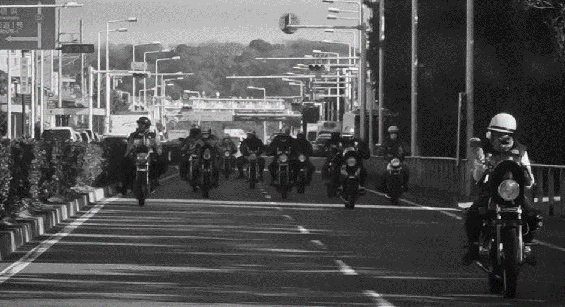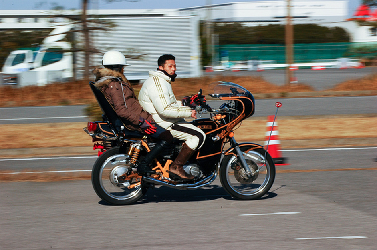To many, Japan is considered like visiting another planet for many travelers who have already been there. Those who become extremely interested in the rich and exciting Japanese culture, after getting acquainted with their main traditions, dig deeper and discover another amazing topic—local subcultures. One of the most famous of them is called bosozoku. Let’s talk about dashing bikers, who, like other similar social groups around the world, are closely associated with crime.
How Everything Started

By the mid-1950s, Japan had begun to recover from its defeat in World War II. The automotive industry has become one of the main drivers of rapid economic growth by producing high-quality vehicles. During these years, groups of car and motorcycle enthusiasts began to stand out among Japanese youth. They were entertained, as it should be, by customized vehicles and illegal night races along the city streets. Of course, those cars are not exciting now, but car history left many examples of successful ideas in those years. From this environment, the first bosozoku appeared, which were then called differently: kaminarizoku (in Japanese, it means “thunder clans”).
Later, this specific social group was primarily made up of young bikers who formed gangs and rode together on public roads, often causing chaos and disrupting the peace. Despite being known for their reckless behavior and illegal activities, the movement has become an integral part of Japanese popular culture, with its own specific style and fashion.
Rise and Decline of the Subculture

Initially, bosozoku included only motorcyclists, but then car enthusiasts began to join. In the late 1970s, the community included more than 20,000 people, divided across the country into several dozen clans. The bosozoku weren’t afraid to break the law, but in most cases their offenses consisted of holding illegal races. However, individual clans were associated with the yakuza and performed various tasks for them.
In the late 1980s, the Japanese authorities openly recognized the subculture as dangerous for ordinary citizens and began to actively fight it. The suppression of the bosozoku was deliberate. It included the following measures:
· creation of special correctional facilities for the gang members;
· changes in road rules;
· complicating the procedure for acquiring vehicles and obtaining a driver’s license.
Today, former gang members have mostly given up the passion of their youth and united in special biker clubs that operate only within the boundaries of the law.
In Japan, you can meet young people whose clothes and vehicles correspond to the bosozoku style today. However, these are only cosplayers, the real vehicles of that time can only be found on salvage auctions.
Distinctive Features of the Bosozoku Gang
Bosozoku groups adhered to a strict uniform, which included black leather jackets with large Japanese characters on the back, baggy pants, and traditional zori sandals that are used with the kimono clothing. They also wore distinctive headbands called “hachimakis”, which had the gang’s name or emblem printed on them.
Most of the bosozoku paid the greatest attention to the customization of their transport. In the subculture, there are several main areas of vehicle styling, and they are very different from each other. Some gang members lowered the suspension on their vehicle as much as possible. Others put deliberately large exhaust pipes and spoilers on them. The motorcycles were modified to be louder and faster, with extended exhaust pipes and sometimes even spikes on the handlebars. The main task was to achieve maximum dissimilarity from everyone else.

The bosozoku lifestyle was about more than just riding motorcycles, though. Gang members would frequently hang out in designated areas, known as bosozoku hangouts, where they would work on their bikes, play music, and socialize. These hangouts could be a source of tension between the bosozoku and the public, as they were often seen as intimidating and disruptive.
The subculture also had its own unique language and code of conduct. Members used slang words and phrases that were specific to the group, and they had a hierarchical structure with a leader at the top. The leader would be responsible for making decisions about the gang’s activities, and members were expected to show respect and loyalty to their superiors.
The bosozoku were notorious for their reckless behavior on the roads, which often involved racing, weaving in and out of traffic, and performing dangerous stunts. They were also known for their confrontations with the police, with some gangs even engaging in violent clashes with law enforcement.
Despite their lawless reputation, the bosozoku weren’t always seen as a negative influence in Japanese society. They were often romanticized in popular culture, with movies, manga, and anime featuring bosozoku protagonists. However, their behavior did result in stricter laws and regulations regarding motorcycle usage on public roads, and many of the hangouts were eventually shut down.
Final Line
Today, the bosozoku subculture still exists in Japan, although it isn’t as prevalent as it once was. Many of the gangs have disbanded or gone underground, and the style and fashion associated with the movement have been adapted into mainstream fashion. However, the legacy of the bosozoku remains an important part of Japanese popular culture and an example of the power of youth subcultures.

